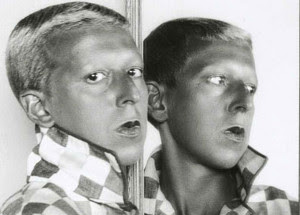Kiera Fils-Aime
Art & Women
04 April 2017
Modernism
What comes to your mind when you hear the term "Modernism" ? Is it philosophy? Cultural trends? A movement? If any of those ideas came to your mind, you are on the right track. According to Guerilla Girls, Modernism was a revolutionary change throughout the world,
" In Western art, movements and "isms" appeared, one after another: impressionism, postimpressionism, . . . Put them all together and what do we get? "Modernism"' ( Guerilla Girls 59). Many new forms of art and artists were appearing during this period. More in depth, Chadwick explains that Modernism is more than a change in art, but also a change of feelings and targets, ". . . With a desire to break with nature and infuse the resulting art with a profound spiritual content, has been extensively traced ( Chadwick 253). Chadwick explains that one of the overall goal of modernism was to get rid of natural paintings and get more "feelings" and our souls into artwork. European women artists played a major role in the upcoming of modernism and its movements. Typically, they would come up with excellent ideas, but, their husbands would take all the credit for them. Also, they never fully got to enjoy art until they were old and retired, but, still they received criticism at times. Although there were many problems that tried to keep women down, some of them were able to surpass the issues and contribute to modernism such as: Claude Cahun (surrealism), Hannah Hoch (dada), Gunta Stöltzl (German expression), and Helen Frankenthaler (abstraction).
Claude Cahun was one of the very first female artists to create artworks of herself dressed as a man, some books about surrealism even classified her as a man. Surrealism was " emergence of a self-conscious set of practices and characteristics through which the modern in art is understood and developed gradually and coincided with with the appearance of first generation women" ( Chadwick 279). Surrealism shares a lot in common with Dada (explained in next paragraph). They both use art as a way to express their feelings on the unfairness in the world rather than being violent. This explanation confirms why Cahn's approach was so astounding, she did not represent first generation women. Instead of feeding into the male gaze, she presented herself the way she feels on the inside. From a very young age, Cahun began experimenting with identity and appearance through the help of her lover, Marcel Moore, who was also stepsisters after their parents got married. Later on, the couple got caught by German troops and sentenced to death; luckily, they were spared when the Allies liberated Jersey (cost of Normandy where they lived).The picture below is a self portrait of Cahun taken in 1928, it is one of her most iconic photos. This picture depicts Cahun as an non gender role conforming women. Her low hair cut resembles a male and her shirt collar is popped so high that one cannot sexualize her body.
 |
| Claude Cahun Self-Portrait 1928, Zabriskie Gallery |
Hannah Hoch was a German dada artist in which she wanted to get rid of the typical female image. She promoted equality among men and women. Dada is a form of art that conveys messages, " movement that challenged every convention and scandalized bourgeois society" (Guerilla Girls 66). Dada emerged around the time of World War I from a group of artists that confirmed the corruption within society that lead to violence. The work of Dada artists accepted and criticized modernism. With that being said, Hannah took action by creating skits that depicted men and women as equal such a man being emotional or a man washing the dishes. Hoch's picture below depicts the mixture of "old" mixed with modern. In particular, the BMW sign represents cars versus the single tire which represents the waggons. Also, the women with a light bulb with the light bulb over her head represents women being able to think for themselves and become more independent.
 |
Hannah Hoch, Pretty Maiden 1920
|
Gunta Stölzl is another female artist that contributed to the Modernism movement. She used German expressions. Similar to the other movements, German expressions are characterized through the artist's mindset and also the generation they lived in. These expressions are creative movements that occurred before the start of World War I. It targeted social changes in areas such as: politics, economics, and art. Stöltzlwas a weaver, transformed traditional pictorial artwork into industrial artwork. She was a female master at Bauhaus (German art school) and later mentored students, reopened Bauhaus after it closed, and also became the school's weaving director when it reopened. The weaving workshop was extremely successful. The picture depicts one of Stölzl weaving designs called "Design for a Runner" which is filled with many different colors and shapes but has an overall calm color scheme.
Helen Frankenthaler is one of the most common abstraction artist that specialized in nature. She created a well known painting technique known as "soak stain" which she used paint with a chemical known as Turpentine on a canvas which created bright and shiny colors. The color appeared to be within the canvas rather than painted onto it. Most of her paintings consist of shapes, abstracts masses, and delicate gestures. Typically, her art is associated with calm and relaxed brush work. The artwork below is one of Frankenthaler's most common pieces, "Mountain and Sea". It was one of her first soak stain projects which promotes warmth and tranquility.
 |
| Helen Frankenthaler Mountains and Sea 1952 |
Works Cited
Cahun, Claude “Self-Portrait” 1928
Frankenthaler, Helen “Mountains and Sea” 1952
Stölzl, Gunta “Design for a Runner” 1923
The Guerrilla Girls, The Guerrilla Girls’ Bedside Companion to the
History of Western Art (New York, Penguin Books, 1998)
Whitney Chadwick, Women, Art, and Society, 4th edition, (New York:
Thames and Hudson), 2007.

No comments:
Post a Comment